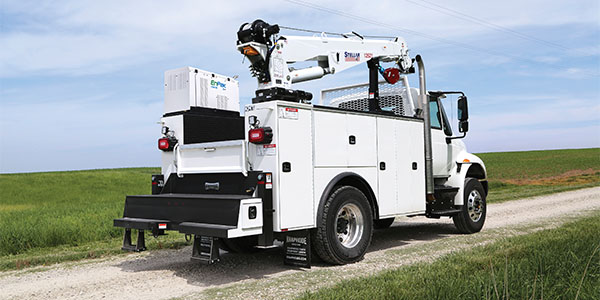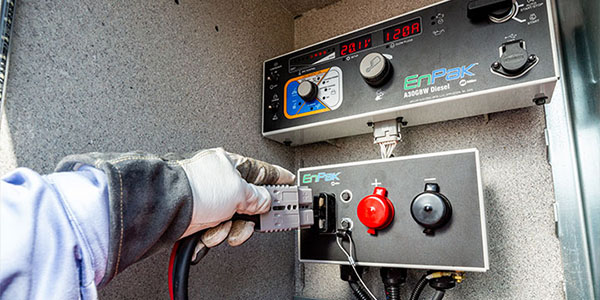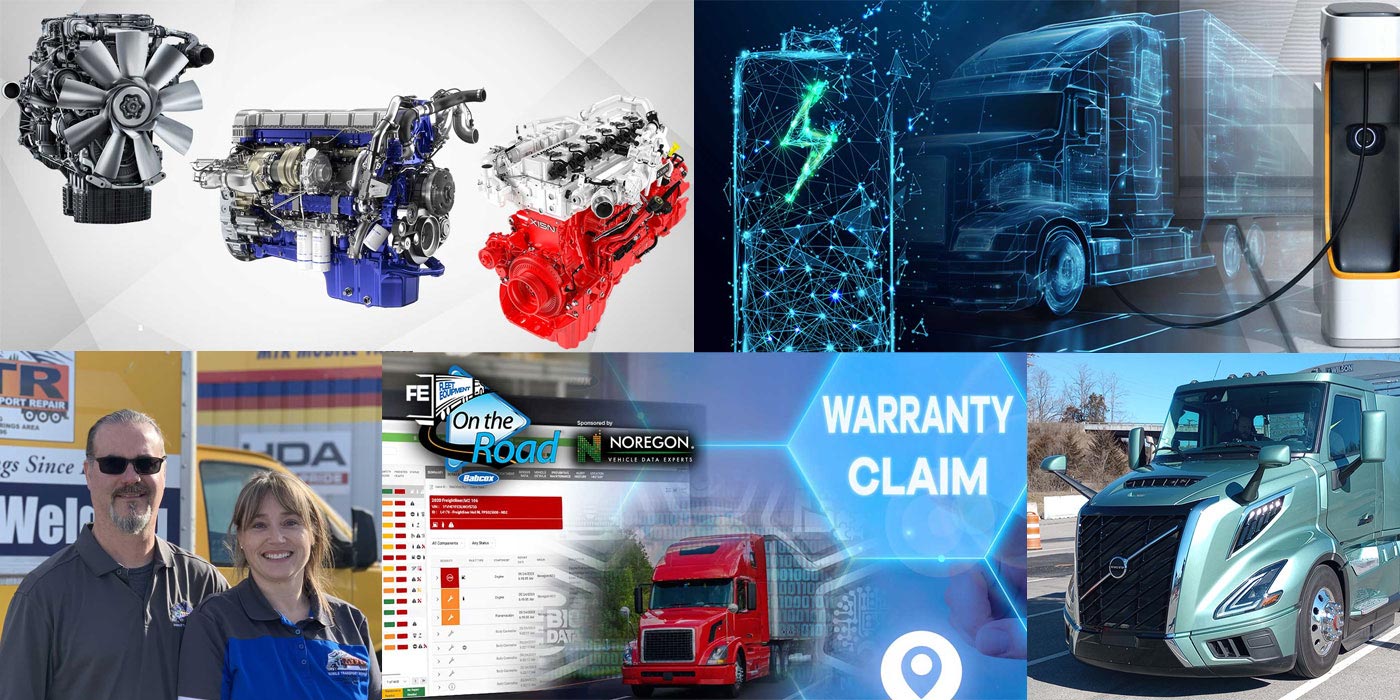For service technicians, the setup and design of their trucks can affect efficiency, comfort and safety, and access to the tools and equipment they need to get work done.
The choices that fleet managers make when specifying a work truck impact play a key role in all of these factors, and it’s not only safety and efficiency that can be improved. A truck with the right layout and equipment can also enhance technician job satisfaction — playing an important role in hiring and retaining technicians in your fleet.
Here are six tips to keep in mind when specifying your next work truck.
Tip 1: Provide easier access to equipment and tools
Keep access and ergonomics top of mind and take a technician’s day-to-day work into account when designing a truck and chassis. Features such as well-placed handrails, steps on the back of the truck, adequate lighting and non-slip surface coverings can improve safety when techs must climb in and out of the truck or have to work in less-than-ideal weather conditions. These add-ons are available in many styles and designs, making it easy to find the solutions best-suited for your truck. Also keep access in mind when mounting larger equipment like welder/generators or auxiliary power units. When possible, place them lower on the truck so the controls are accessible from the ground.
Tip 2: Reduce the need to climb in and out
When technicians must repeatedly get in and out of the back of their trucks to change equipment settings or reach tools, it increases the chances for strain or injury. Minimizing how often a tech must take this action reduces hazards and saves time. Choose equipment and accessories that provide easy access, such as remote panels or point-of-use controls. This allows technicians to change settings and access functions from the ground — so they spend less time walking back and forth or climbing in and out of the truck.
Tip 3: Make maintenance and service easier
Following a regular service schedule for the truck engine and equipment on the truck will help avoid breakdowns and poor performance. Look for equipment that is designed for simple maintenance — with features that offer faster and easier access to reduce the hassle and time spent on maintenance when it’s needed. For example, some equipment has removable service panels or all of the service points located on a single side of the machine. Some truck accessories and equipment offer remote oil filter and drain kits, which keep technicians off the truck since they can access the equipment from the ground for service.
Tip 4: Don’t forget truck cab comfort
Techs and mechanics work in all types of weather to complete repairs and maintenance on the jobsite. When they’re working in rain, heat or freezing cold, a cooled or heated truck cab gives them a break from the elements — a big factor in tech comfort and productivity. It also helps keep their laptops and cell phones safe and dry. However, some options for heating and cooling a work truck cab increase fleet costs and affect a truck’s resale value if they involve cutting or modifying the cab. This can force fleet managers to choose between technician comfort and their goals of controlling costs and reducing truck idling. Instead, choose an integrated heating and cooling solution that provides cab climate control without the need to run the truck engine. This type of solution prioritizes tech comfort and safety while also saving money on fuel and maintenance.
Tip 5: Reduce clutter on the truck
An organized truck that is free of clutter can help technicians be more efficient while also reducing the risk of slips, trips and falls. Choosing one tool or piece of equipment that provides multiple capabilities is one way to consolidate equipment on a truck. For example, a single auxiliary power system can provide welding, generator power, compressed air, battery charge and hydraulic capabilities. This reduces the amount of equipment needed on the truck and frees up space for other tools. Investing in cabinets and shelving also helps technicians keep their tools organized to reduce clutter.
Tip 6: Use data to promote better habits
Telematics systems can deliver a wealth of information about every truck in a fleet, allowing fleet managers to track things like fuel costs or time spent on a job. These systems can also be used to monitor certain behaviors and driving habits, such as sending alerts regarding speed or harsh braking. Take advantage of telematics data in your fleet and use it as an opportunity to implement any needed training, reward good habits and promote more efficient and safer practices.
Focus on access and comfort when spec’ing a truck
Take into account a service technician’s comfort, safety and efficiency when designing and upfitting a truck. It can improve tech satisfaction and retention and can also help techs complete jobs faster — positively impacting your fleet’s productivity.
















